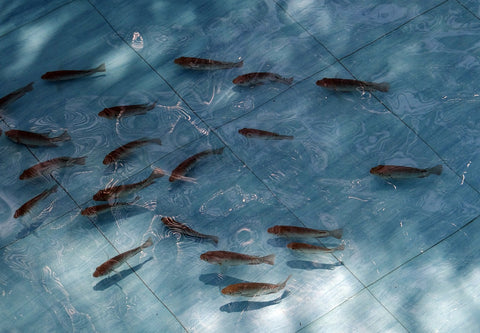Selecting Quality Fingerlings: A Guide for Nigerian Fish Farmers

The foundation of a successful fish farm starts with high-quality fingerlings. Poor-quality or diseased fingerlings can lead to slow growth, high mortality rates, and financial losses. As a fish farmer in Nigeria, understanding how to select the best fingerlings is essential for maximizing productivity and profitability.
At RFisheries Nigeria, we prioritize providing robust, disease-free, and fast-growing fingerlings to ensure our clients achieve success in aquaculture. This guide will help you understand why selecting premium fingerlings is crucial and how to identify and source the best stock for your farm.
Why Quality Fingerlings Matter
Starting with healthy and genetically superior fingerlings leads to:
✔ Faster Growth Rates – Stronger fingerlings reach market size quicker, reducing production cycles.
✔ Lower Mortality Rates – Disease-free fingerlings are more likely to survive and thrive.
✔ Better Feed Conversion Efficiency – Healthy stock efficiently converts feed into body weight, lowering feed costs.
✔ Higher Profitability – Quality fish fetch better prices in the market, increasing farm revenue.
Characteristics of Premium Fingerlings
When selecting fingerlings for your farm, look out for the following key traits:
1. Active and Responsive Behavior
Healthy fingerlings are energetic, swim actively, and respond to movement in their environment. Weak or sluggish fingerlings may indicate underlying health issues.
2. Uniform Size and Growth Potential
Quality fingerlings should be of consistent size, as uneven growth can lead to competition for food and increased cannibalism in your pond.
3. Clear and Smooth Skin
Check for any signs of ulcers, deformities, or discoloration. Premium fingerlings have smooth, clear skin without lesions or wounds.
4. Strong and Well-Developed Fins
Healthy fingerlings should have intact and well-formed fins without signs of damage or fraying. Broken fins can indicate stress or poor handling.
5. No Signs of Disease or Parasites
Avoid fingerlings that show symptoms such as:
❌ Erratic swimming or floating
❌ Red patches or sores on the body
❌ White spots or mucus buildup on the skin
❌ Bloated or sunken bellies
